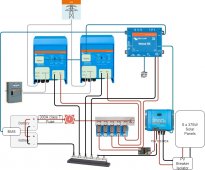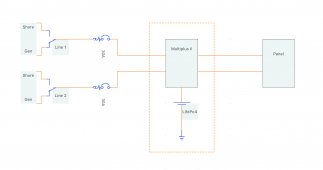HighTechLab
AKA Dexter - CTO of Current Connected, LLC
- Joined
- Sep 23, 2019
- Messages
- 1,754
Mandatory. There is no ESS operability built into the MK3 dongle, only programming the assistant. The Cerbo is what does the calculation and control of the ESS because it is meant for tying into the solar controllers / rest of the system.Fantastic! Looking forward to your video.
Another quick question about the Cerbo.
I’m reading on various Victron Forums that the lowest-cost solution to configure the Multiplus II if you have a laptop is to install a free software application and purchase the USB adapter for the Multiplus II.
Will this solution allow the Zero Export to CT functionality to be configured in the Multiplus II or is there some reason a Cerbo is mandatory?
Victron came out with a Cerbo-S GX that leaves out some of the unused functionality for a lower price. We should have some of them coming in by the end of the week.




